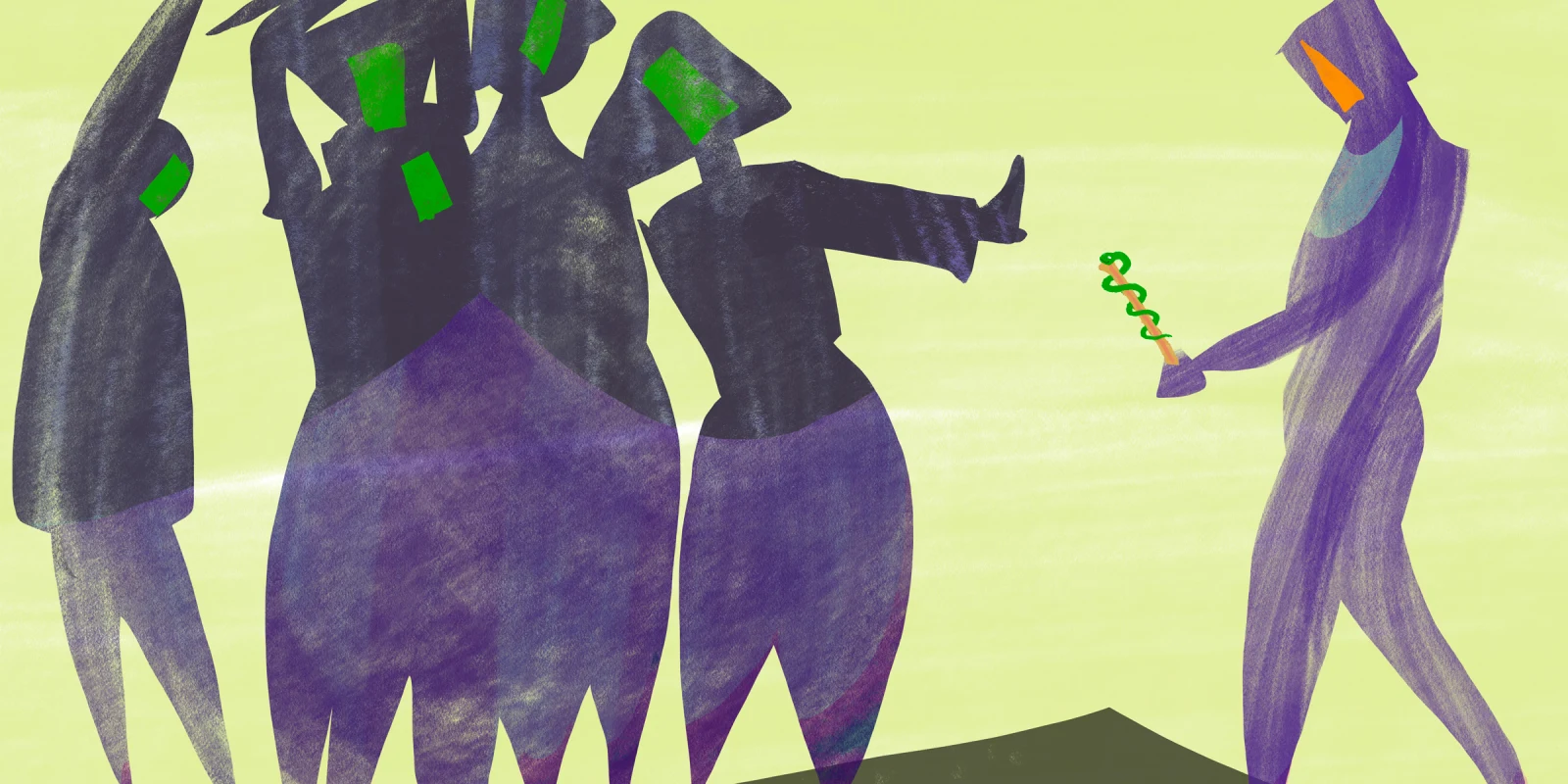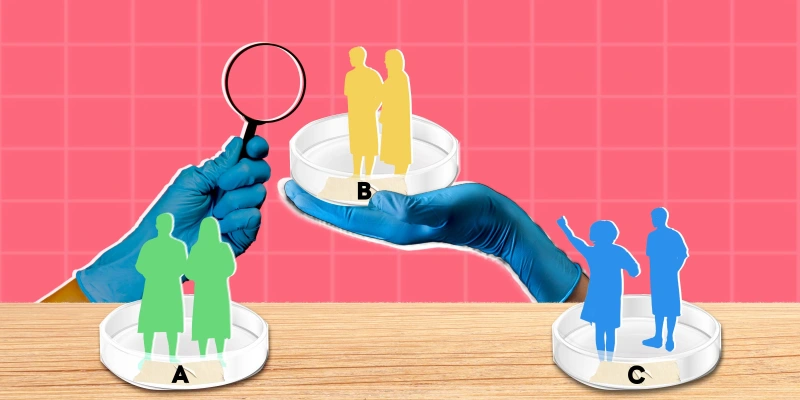“So, tell us what happened,” I said. I was standing in the Shock Trauma tower, talking to the 30-something-year-old African American man the psychiatry team had been called to evaluate.
“Well, there was a man following me down the street, so I jumped off the Howard Street bridge.” The patient stopped and looked at me expectantly. I’ve lived in Baltimore for over 10 years and I knew exactly the bridge he was talking about.
“Were you trying to end your life?” I asked, confused. The bridge goes over some heavily trafficked train tracks and a major highway; it’s at least a 10-story drop. And yet, he somehow only fractured a few vertebrae.
The man shook his head. “No, I was trying to get away from this man. I was coming out of the Motel 6 and was going to McDonald’s to get food, but there was a guy following me, so I went the other way and jumped off the bridge.” He looked at me calmly then, like his had been the most natural reaction in the world.
I knew exactly the Motel 6, the McDonald’s, and the bridge he was talking about — but I was still pretty confused. Why didn’t he turn right and run down Howard? Why didn’t he continue running down North Avenue and duck down a side street? Why didn’t he run into McDonald’s? And how in the world did he think he wouldn’t die jumping off the bridge?
“Were you on anything? I’m not judging you, just trying to figure out what happened.” (I guess I cheated here; I already knew his urine tox screen was positive for a few things. But that jump was still a very, very long way down even for someone in an altered state of mind.)
“Well yeah, but I wasn’t high. I knew what I was doing.”
… OK, even if he had been in full control of his actions, I still had questions. Lots of questions. I asked a bunch of them, learned a bit about him, where he grew up in Baltimore, how he’d been feeling since he got out of surgery, and eventually got around to why psych was called in the first place.
“So, do you have any mental health problems?”
“I was diagnosed bipolar-schizophrenic when I was a kid.”
“Were you ever admitted to the hospital for that?”
Turns out he was admitted. Multiple times. As a teenager and as an adult. At some state psych facilities, you don’t get admitted unless things have gotten pretty bad. For him, the symptoms that led to his “bipolar-schizophrenic” diagnosis were paranoia, extreme paranoia, always watching over his shoulder, thinking people were out to get him, getting really angry really fast, causing havoc when angry, and moods that went up and down and up and down.
I started putting together my thoughts about the patient. The first thing I knew about his diagnosis was from my second year of medical school: Bipolar disorder and schizophrenia are mutually exclusive. You can have schizoaffective disorder, bipolar type (psychosis and mania +/- depression symptoms, but never mood symptoms in the absence of psychosis), bipolar disorder (sometimes with psychosis, but never without mood symptoms), or schizophrenia (psychosis, no mood symptoms). But you can’t have more than one of those diagnoses — bipolar schizophrenic doesn’t exist, no matter how many people have been told they have it, which is a lot (in my and my colleagues’ experience).
The second thing I knew was the neighborhood where he grew up in Baltimore. It’s a place where you might need to look over your shoulder to stay safe.
The third thing I knew was what he had told me about what it was like for him growing up. It wasn’t the sort of stuff that should happen to a kid.
The fourth thing I knew was that the medications he’d been prescribed (quetiapine, sodium valproate, haloperidol) are mostly for people with schizophrenia, schizoaffective disorder, and bipolar disorder.
The fifth thing I knew was that if you pulled out the DSM and looked at the criteria for those three disorders, he didn’t meet any of them.
The sixth thing I knew was that if you looked up PTSD or various substance use disorders, the criteria fit him like he’d written the book.
The last thing I knew was that Black Americans, and particularly Black American males, and particularly young African American males, are much more frequently diagnosed with psychotic disorders (such as schizophrenia) than other demographics, despite data suggesting that these illnesses are not actually more prevalent in Black American males.
Studies have shown that even after controlling for other demographic variables, patients with the same constellation of psychiatric symptoms are more likely to be diagnosed with schizophrenia if they are Black. Clinicians have been shown to put more weight on psychotic symptoms when diagnosing a patient if the patient is Black. When psychotic symptoms are present, clinicians are more likely to jump to a diagnosis of schizophrenia if the patient is Black than if the patient is white. This is true even though schizophrenia should be a diagnosis of exclusion, after it is determined that the psychotic symptoms are not better explained as part of a mood disorder (like depression) or a trauma-related disorder (like PTSD). In fact, if a patient is irritable, quick to anger, paranoid, or even hearing voices sometimes, they’re probably still more likely to have a mood disorder like depression (experienced by 20% of the population over a lifetime) than schizophrenia (experienced by 1% of the population). Studies have also shown that Black patients are more often given antipsychotic medications, which carry the hefty risks of significant weight gain, metabolic syndrome, orthostasis, sedation, etc. White patients, by contrast, are more likely to get SSRIs, which carry only a rare risk of serious side effects.
So, why is the diagnosis of schizophrenia given more readily to Black males? There are probably many reasons. To start, paranoia in Black patients might be better called “healthy paranoia”; in a society in which Black males have had to look over their shoulders to avoid getting lynched, looking over your shoulder is smart. And if, like my patient, you grew up in a neighborhood where you had to watch out to avoid getting jumped, being paranoid of shadows on the street is smart. In a neighborhood where there is gang-related violence and people might be out to get you, being aware of that reality is a good thing. If you’re growing up in a place and in a society where what goes on around you requires that you be on alert all the time, the constant stress might make you short-tempered. In a society where your life is systematically undervalued and injustice is endemic, there might be a lot of things that it would be reasonable for you to be angry about. It might even get to the point where the safest option is to jump off a bridge to avoid what’s coming after you, whether or not there are some drugs in your system, because you know that all the other directions you could run might be a more dangerous bet than jumping.
Where did the system go wrong for this patient? If he were white with a story of growing up in a dangerous area, looking over his shoulder, experiencing trauma, and presented to a doctor with symptoms of paranoia, short temper, and rapidly-shifting (or hyper-labile) mood swings, would he have been diagnosed with schizophrenia? Would he have been in state psych hospitals multiple times as a teenager? Would he have ended up on quetiapine (leading to obesity and diabetes), sodium valproate (more obesity), and haloperidol (neurotoxic)? Or, would he have gotten the correct diagnosis of a trauma-related disorder, and gotten the appropriate trauma therapy and SSRIs that would have treated his illness? I’m not sure — but I know that what he got was medications that didn’t treat his illness and were much more likely to leave him with co-morbidities.
Regardless of your specialty, the next time you see a patient, especially a Black male, with “bipolar schizophrenia,” schizophrenia, bipolar disorder, or schizoaffective disorder, consider asking a couple of quick questions that could be life-changing. Which symptoms led to your diagnosis? Is there a reason you might not have had the opportunity to learn how to regulate your emotions and not act impulsively? Is there a reason you might have become suspicious of the world? A reason that isn’t schizophrenia?
Have you ever encountered a patient with a diagnosis that wasn't just incorrect, but impossible? Share both diagnoses — the impossible diagnosis and the correct diagnosis — in the comments.
Dr. Carolyn Rosinsky is a child/adolescent psychiatry fellow at Children's National Medical Center/George Washington University and completed her general psychiatry residency at University of Maryland/Sheppard Pratt. She is also a professional cellist and maintains an active career performing and teaching. Dr. Rosinsky is a 2021–2022 Doximity Op-Med Fellow.
Illustration by Jennifer Bogartz







